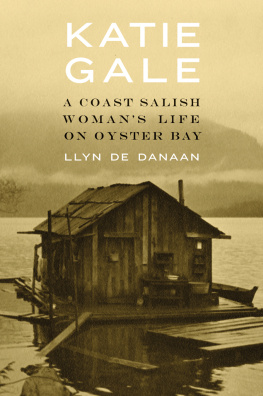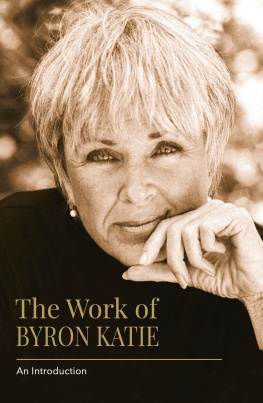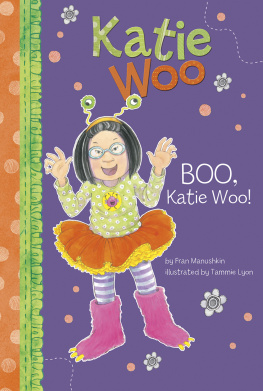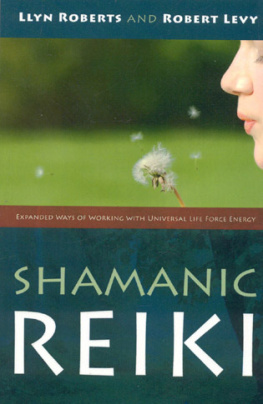LLyn De Danaan - Katie Gale
Here you can read online LLyn De Danaan - Katie Gale full text of the book (entire story) in english for free. Download pdf and epub, get meaning, cover and reviews about this ebook. year: 2018, genre: Home and family. Description of the work, (preface) as well as reviews are available. Best literature library LitArk.com created for fans of good reading and offers a wide selection of genres:
Romance novel
Science fiction
Adventure
Detective
Science
History
Home and family
Prose
Art
Politics
Computer
Non-fiction
Religion
Business
Children
Humor
Choose a favorite category and find really read worthwhile books. Enjoy immersion in the world of imagination, feel the emotions of the characters or learn something new for yourself, make an fascinating discovery.
- Book:Katie Gale
- Author:
- Genre:
- Year:2018
- Rating:3 / 5
- Favourites:Add to favourites
- Your mark:
- 60
- 1
- 2
- 3
- 4
- 5
Katie Gale: summary, description and annotation
We offer to read an annotation, description, summary or preface (depends on what the author of the book "Katie Gale" wrote himself). If you haven't found the necessary information about the book — write in the comments, we will try to find it.
Katie Gale — read online for free the complete book (whole text) full work
Below is the text of the book, divided by pages. System saving the place of the last page read, allows you to conveniently read the book "Katie Gale" online for free, without having to search again every time where you left off. Put a bookmark, and you can go to the page where you finished reading at any time.
Font size:
Interval:
Bookmark:


2013 by the Board of Regents of
the University of Nebraska
All rights reserved
Library of Congress Cataloging-in-Publication Data
De Danaan, Llyn.
Katie Gale: a Coast Salish womans life
on Oyster bay / LLyn De Danaan.
p. cm.
Includes bibliographical references.
ISBN 978-0-8032-3787-2 (cloth: alk. paper)
1. Gale, Katie. 2. Coast Salish
IndiansWashington (State)Biography.
3. Indian womenWashington
(State)Biography. 4. Coast Salish
IndiansSocial life and customs. I. Title.
E 99. S 21 D 43 2013
979.7004'97940092dc23 [B] 2013009237
Set in Garamond Premier by Laura Wellington.
Designed by Nathan Putens.
The publisher does not have any control over and does not assume any responsibility for author or third-party websites or their content .
In fond memory of Margaret Midge Ward, Quileute Nation
Dedicated to David Whitener (19342012), Squaxin Island Tribe, and Judy Wright (19392013), Puyallup Tribe of Indians Historians and stewards of heritage and legacy and All of our grandchildren
Special thanks to Pete Bloomfield
They reserved everything in the salt water and in the creeks and in the rivers and up on the hills, and that is what made the Indians agree to this treaty that was made, because they reserved all of this; they thought they were going to have it all to themselves. DICK JACKSON , Duwamish et al. v. United States of America , U.S. Court of Claims, March 1, 1927
There is no need
For you to give
Back to us
What we already own
TED C. WILLIAMS (Tuscarora),
Repatriating Ourselves
Illustrations
IMAGES
Following page 114
1. Dick Jackson
2. Katie Gales tombstone
3. Chief Kettle and Louis Yowaluch, or Mud Bay Louie
4. Louisa Tobin
5. Map with Salish designations of significant places around Oyster and Mud Bays
6. A View of Arcadia , by James Tilton Pickett
7. The stern-wheeler Willie
8. A float house on Puget Sound
9. John Leslie on the steamer S. G. Simpson
10. Katie Gales home and oyster operation on Oyster Bay
11. Oyster Bay School, 1898
12. Wedding of James and Louisa Tobins daughter Katie to Edward J. Smith
13. The steamship Willamette , 1897
MAPS
1. Southern Puget Sound inlets and locales

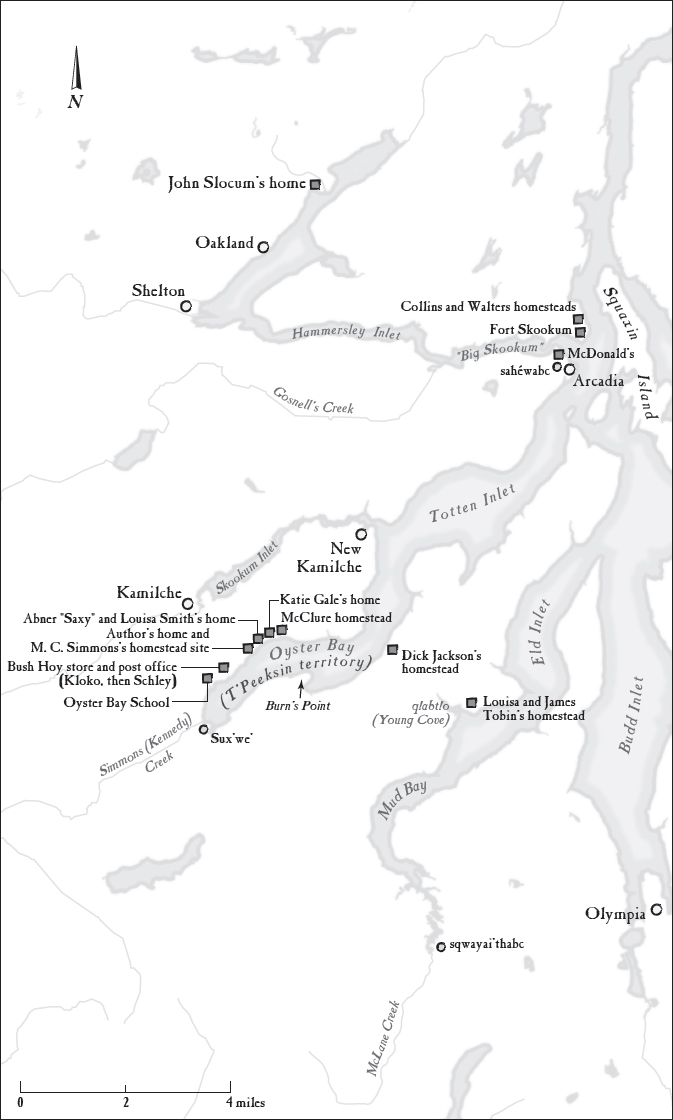
Map 1. Southern Puget Sound inlets and locales of importance to the narrative.
My Lodestone
KATIE KETTLE GALE was born into violence in an era of violence. As a child, she was surrounded by people who had lost everything and to whom promises from the government seemed not to mean much. She was close to Chief Kettle, a man whom her kin, James Tobin, said was wary of Indian women marrying white men. His words and warnings must have been repeated to her often as life with her husband, Joseph Gale, a white man, became unbearable.
Pete Bloomfield was the catalyst for this story. Pete grew up at Kamilche Point on Puget Sound in Washington State, where his father, Charles James Bloomfield, had acquired an eighty-acre plot. Charles worked for the Olympia Oyster Company in addition to working his own land. Pete, born in 1923, started logging in the area in 1948. He had long remembered a day in the late 1950s when he was felling trees around Oyster Bay, scant miles from Kamilche Point. He had his own logging outfit then. It was called Bloomfield Logging Company. On that day he came across some tombstones deep in the woods. It was common for early homesteaders, ranchers, and farmers to bury their deceased near their home and on their own property, so there was nothing particularly unusual about his find. Many of these little plots have been long since forgotten and overgrown as land has changed hands and descendants have abandoned the rural life for other prospects. Most of these graves are never visited and many have been desecrated; many tombstones have been broken or stolen and some graves have been dug up and robbed of their contents.
Petes mind must have wandered back to that little plot on and off through the years. That memory just wouldnt go away. It was one of those things he always meant to do something about. So one day he got into his car and drove into downtown Shelton, the administrative seat of Mason County, Washington. He pulled up in front of the little repurposed Carnegie library building that contains the artifacts and documents cared for by the Mason County Historical Society Museum staff. Billie Howard, the director, was probably sitting, as always, behind a desk that allows her to see anyone who comes in through the door. Shirley Erhart was there if it was a Tuesday. Shirley is a bloodhound on the trail when it comes to finding great source material. She can spot in an instant something she knows Ill be interested in as she peruses newspaper files and dusty ledgers. Her memory for what shes seen and where shes seen it is enviable. I often receive the bounty of her serendipitous finds: a bundle of copied clippings in my mailbox along with a cheery note.
Stan Graham, a part-time employee of the museum and a retired assistant fire management officer, was there. He fought fires for the Olympic National Forest for twenty-nine seasons and then turned his attention to his longtime love, local history. He is a big, bright, inquisitive, and garrulous fellow. Stan listened to Pete carefully. He knew the spot Pete was talking about was near my house, so he gave me a call. Stan was aware that Id worked for Puget Sound tribes for years and knew of my growing absorption with documenting the cultural and economic history of Oyster Bay. We had some common interests and I had mentored him through his effort to catalogue the prairies of the Olympic Peninsula. He helped me learn to read and use mid-nineteenth-century survey maps while I was working for the Puyallup Tribe of Indians.
On a summer day in 2004 Stan and Jan Parker, who also worked at the museum, picked me up at my place. My house is on the way to the site, just a half mile from the driveway that leads to the Olympia Oyster Company, near where Pete had said he remembered seeing the markers. As we bounced along gravel roads in Stans oversized pickup, I examined a small-scale map on which Pete had marked a huge black X with a felt pen. We had clippers, loppers, pruners, leather gloves, and a couple of cameras with us.
After a few inconclusive inquiries at company houses located on the incline above Oyster Bay, we hacked our way up a bushy hill we thought might be the right one. It had been enthusiastically overgrown with alders and blackberries since Petes decades-old clearing.
Through vines and branches we saw, all at the same time, what we were looking for. We shouted to each other, Look, weve found it. It seemed so unlikely. We were astonished at our own capacity for sleuthing. We had been given so few clues and the territory where the plot might have been was immense.
Now silent, aware that this was a sacred space, we walked toward the stones amid the ivy and brush. There were several visible. We knelt near the biggest block. This inscribed slab leaned against a gray, stout, moss-covered base. It took a few minutes to make out the letters through the lichen and discoloration on the monument. The children of Mr. and Mrs. Johnson, it read, Hattie and Henry. Henry died in 1895 at age seventeen. Hattie died in 1897 at age eighteen, according to the inscription.
Next pageFont size:
Interval:
Bookmark:
Similar books «Katie Gale»
Look at similar books to Katie Gale. We have selected literature similar in name and meaning in the hope of providing readers with more options to find new, interesting, not yet read works.
Discussion, reviews of the book Katie Gale and just readers' own opinions. Leave your comments, write what you think about the work, its meaning or the main characters. Specify what exactly you liked and what you didn't like, and why you think so.

